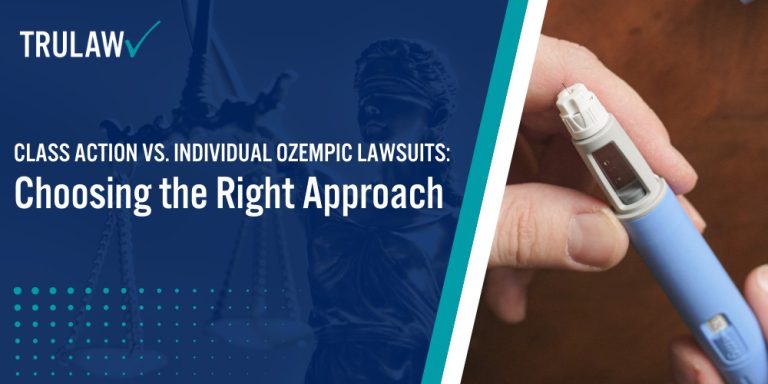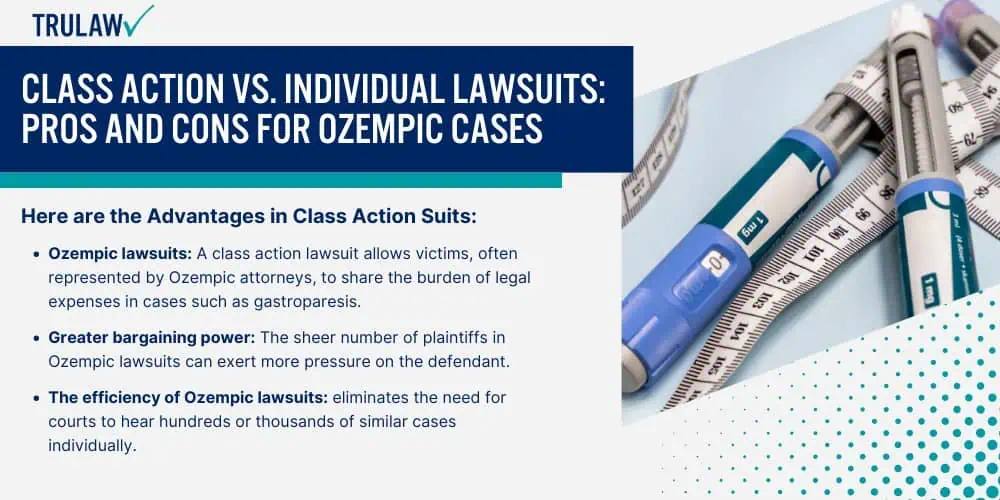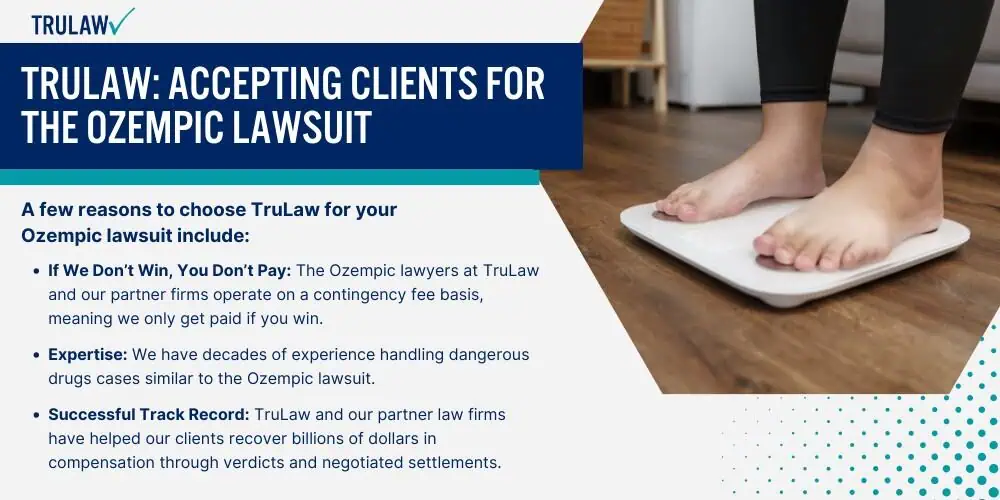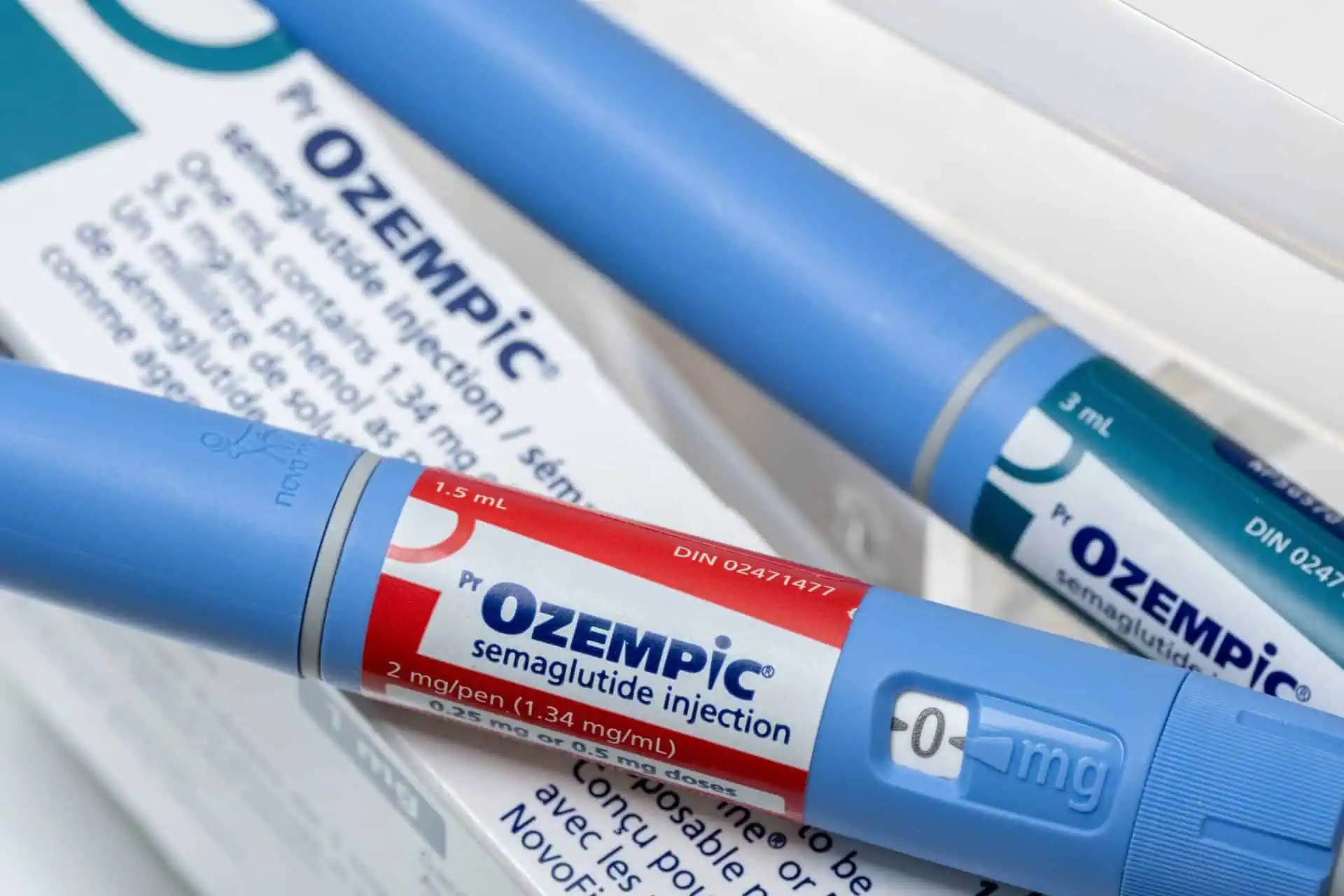Advantages and Disadvantages of Class Action Suits
Ozempic class action lawsuits, such as those monitored, offer a collective legal front, particularly when dealing with drug cases like Ozempic’s semaglutide and its potential to cause gastroparesis in the stomach.
This approach can be beneficial to Ozempic attorneys in pooling resources and sharing legal costs among multiple plaintiffs in Ozempic lawsuits, particularly those related to gastroparesis.
Here are the Advantages in Class Action Suits:
- Ozempic lawsuits: A class action lawsuit allows victims, often represented by Ozempic attorneys, to share the burden of legal expenses in cases such as gastroparesis.
- Greater bargaining power: The sheer number of plaintiffs in Ozempic lawsuits can exert more pressure on the defendant, potentially leading to larger settlements.
- The efficiency of Ozempic lawsuits: eliminates the need for courts to hear hundreds or thousands of similar cases individually.
Here are the disadvantages in Class Action Suits:
- In the context of Ozempic lawsuits, plaintiffs with gastroparesis have little say in how the case is managed.
- Ozempic lawsuit settlements are divided among all plaintiffs, which might result in lower individual payouts, especially in cases involving gastroparesis.
- Ozempic lawsuits, being class action suits, often take longer due to their complexity.
Benefits and Drawbacks of Individual Lawsuits
On the other hand, an individual lawsuit provides a platform for victims to present their unique circumstances.
This could lead to higher compensations if successful but also carries its own risks.
Potential benefits of individual lawsuits include but are not limited to:
- Personalized attention: Each case is handled independently, allowing for more personalized representation.
- Potential for higher compensation: If successful, individuals may receive a larger payout compared to class action participants.
Potential drawbacks of individual lawsuits include but are not limited to:
- Higher costs: Individuals bear all legal costs themselves which could be substantial.
- Riskier: If unsuccessful, individuals may not only lose their case but also incur hefty legal fees.
Factors Influencing Choice Between Class Action or Individual Lawsuit
Choosing between a class action lawsuit and an individual one depends on several factors.
Here are the factors in choosing between a class action lawsuit and an individual:
- Severity of injuries or side effects experienced
- Financial capability to handle potential legal costs
- Willingness to wait for the conclusion of a potentially long-lasting legal process
Potential Impact on Compensation Amount Based on Type of Lawsuit Chosen
The type of lawsuit chosen can significantly impact the compensation amount.
Class action lawsuits often result in lower individual payouts as settlements are divided among all plaintiffs.
However, they offer a greater chance of success due to their collective bargaining power.
Conversely, individual lawsuits may yield higher compensation if successful, as the entire settlement goes to one person.
However, they carry more risk and could lead to substantial losses if unsuccessful.
In essence, both class action and individual lawsuits present different opportunities and challenges for victims of Ozempic side effects.
The decision should be made in consultation with a competent attorney who understands insulin secretion cases thoroughly.





